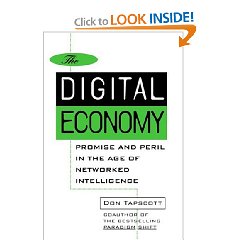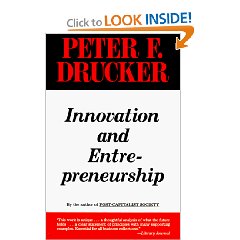Review: The Digital Economy–Promise and Peril in the Age of Networked Intelligence
5 Star, Best Practices in Management, Budget Process & Politics, Capitalism (Good & Bad), Change & Innovation, Complexity & Resilience, Economics, Information Operations, Information Society, Information TechnologyReview: Searching for the Spirit of Enterprise–Dismantling the Twentieth-Century Corporation Lessons from Asian, European,
4 Star, Best Practices in Management, Consciousness & Social IQExcellent airplane book. Articulates concerns about business schools that disdain real business, for managers that count money instead of making it, and for governments that are complacent about the lack of an entrepreneurial culture within their business ranks. His general approach is to deconstruct companies into smaller units where the management can be close to the actual value-creation, there are simpler more honest relationships, and there is a combined sense of pride and urgency that increases the momentum and productivity of the group.

Review: The Fifth Discipline
4 Star, Best Practices in ManagementMost helpful would be a new edition of this book, but one that places fully half the book's emphasis on identifying the obstacles to reform and learning, with each obstacle then addressed from both a top-down and a bottom-up perspective.
9-11 demonstrated that the theory of this book is badly needed within the ultimate “learning” community, the U.S. Intelligence Community. Even after 9-11, the leadership of that community refuses to admit it failed, and refuses to propose or acknowledge the substantial changes recommended by over 15 books–a huge critical mass–recommended by the Council on Intelligence. CEOs of multi-billion dollar corporations might choose to reflect on how best to combine the lessons from this book, which are valuable, with the lessons from how a $30 billion a year tax-payer funded community can refuse to change.

Review: Keeping Abreast of Science and Technology: Technical Intelligence for Business
5 Star, Best Practices in Management, Change & Innovation, Decision-Making & Decision-Support, Education (Universities), Environment (Solutions), Games, Models, & Simulations, Information Operations, Intelligence (Commercial), Science & Politics of Science, Technology (Bio-Mimicry, Clean)W. Bradford Ashton (Editor), Richard A. Klavans (Editor)
Dick is a genius, and he and Bradford Ashton have pulled together a number of very fine contributions in this book. Still, they sum it up nicely in the concluding chapter: “The formal practice of developing technical intelligence in American business is only in its infancy.” They have a nice appendix of sources on scientific and technical intelligence that is missing a few big obvious sources like the Canadian Institute for Scientific and Technical Information (CISTI) and the Defense Technical Information Center (DTIC) as well as the Institute of Scientific Information (ISI) and several smaller sources. On balance, this technical intelligence community is, as Bradford notes, in its infancy. It is U.S. centric, does not yet understand operational security and counterintelligence, is weak of cost intelligence, relies too heavily on registered patents, and has too few practical successes stories. Especially troubling is the recent trend within DIA and the Air Force of cutting off all funding for open source exploitation of Chinese and other foreign S&T sources, combined with a dismantling by many corporations of their libraries and most basic market research functions. This book is an essential reference and I admire its authors greatly-sadly, they are part of a small minority that has not yet found its full voice.









